Reflecting on feelings and actions can help boys learn healthy ways to respond to future scenarios. The write-in option also encourages agency—a positive, since boys do not always get permission to describe their own feelings.
Sophie Carrillo did the beautiful graphic design for the booklet, and each team member designed the content for one of the sections. I was responsible for the "Crush Stuff" activities in the section above. Below are the other sections of the book.
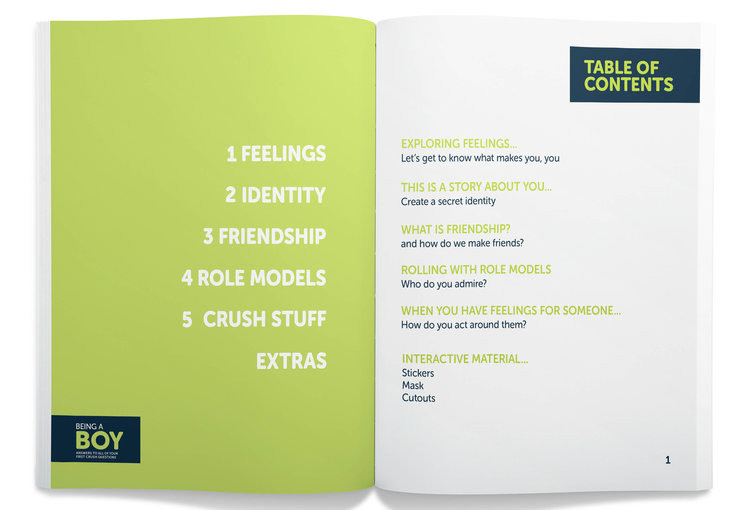
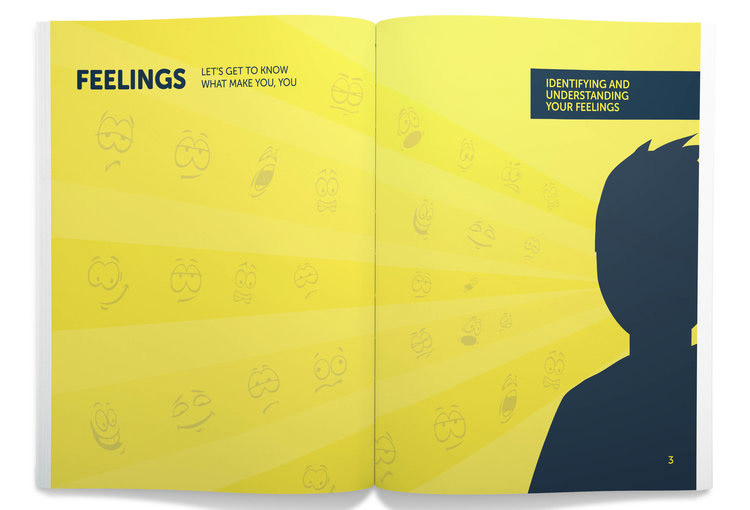
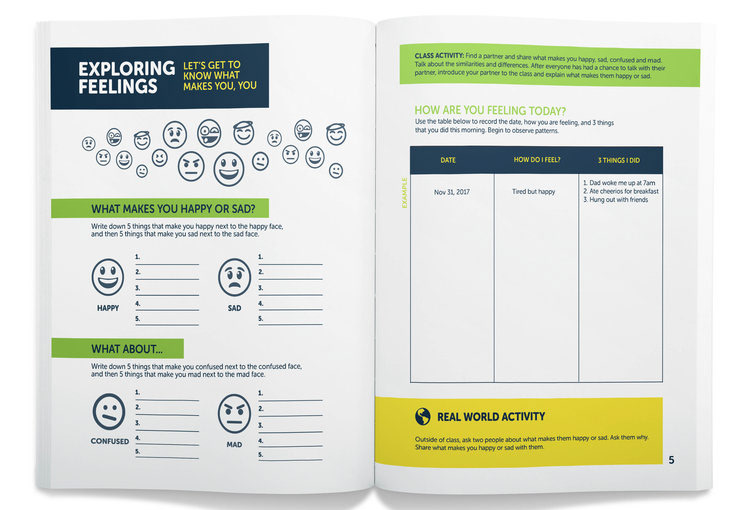

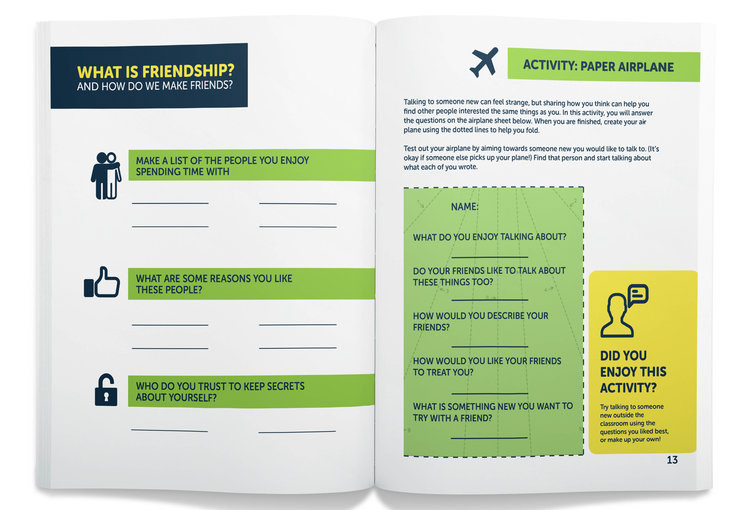
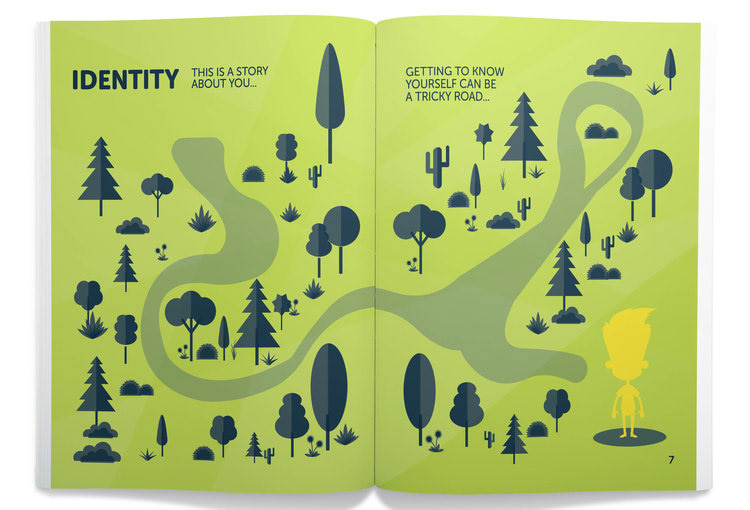
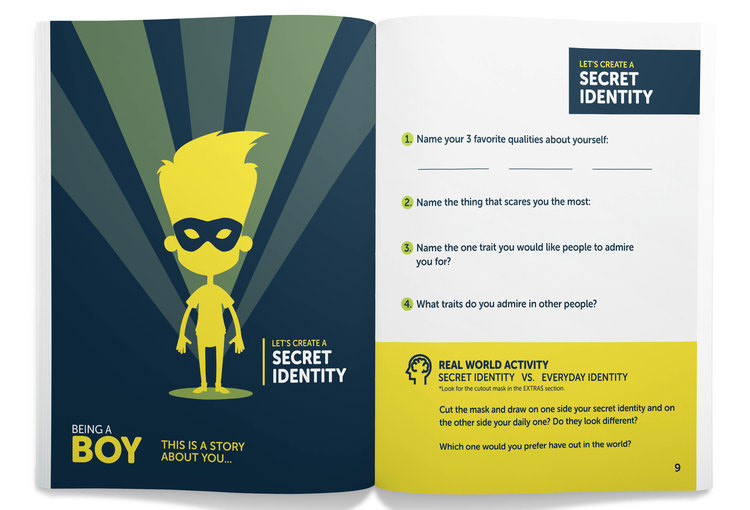
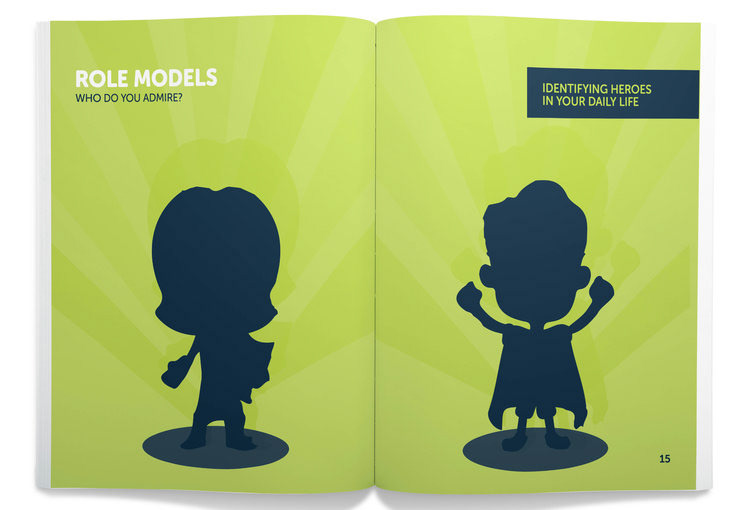
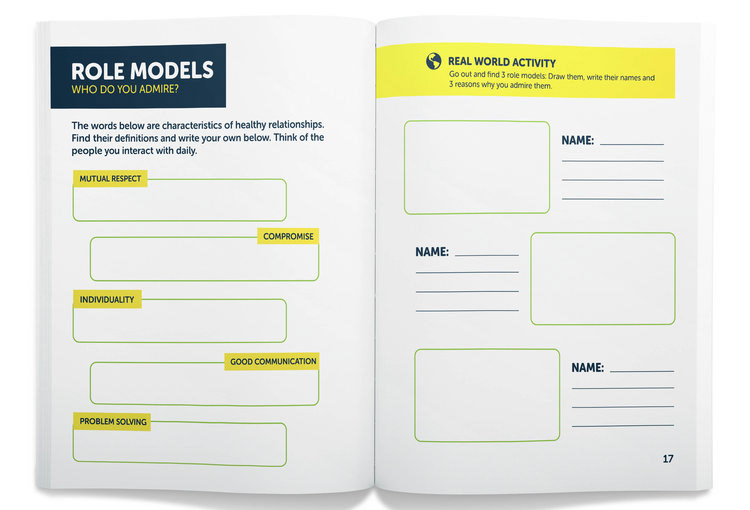
An iterative journey
The booklet was the result of an iterative design research process. It began with a huge "How might we...?", given to my team by our instructor.
Our initial research gave us a broad view of the domain area of Affordable Healthcare, and we quickly focused in on a specific area within that: preventative care. Our instructor turned us toward preventative care for the sexually-transmitted disease HPV, as it is an epidemic rapidly regaining the attention of medical providers. This led us to sexual education as an underserved channel for sexual health preventative care.
However, at this point, we realized that while sex ed was an underserved channel, HPV was not particularly lacking preventative care options. As a group, we chose to pivot to a leading cause of health care risks/problems among women that is both underserved by sexual education curricula and where prevention is imperative: rape culture—the normalization of sexual and gender-based violence in our society. While learning more about rape culture, our research kept bringing us back to the concept of hypermasculinty.
Ultimately, this was the core problem we sought to address with the Being a Boy booklet.
Interviewing experts
All of our decisions along this journey were informed by the interviews we conducted each week with experts and subjects. These included parents, sexual health educators, grassroots organizers, and medical professionals.
In addition to aiding our decisions at each iteration, we distilled key insights that guided the design of our final product.
Testing the booklet
It took awhile for us to be able to meet with boys around our target age demographic of 8-10, but after forming relationships with local schools and skateboarders, we were able to bring it to them.
Video by Zihan Chen. Interviews conducted by Evie Cheung, Carly Simmons, Zihan Chen, and Jennifer Rittner.
Most of the boys responded positively to the booklet, saying that they had not seen other resources like it and that they wanted to have one. However, it was evident that we needed to learn more about interviewing/product-testing with kids and pre-teens, as it was challenging to get design insights from these field tests. Still, we were glad that the booklet looked fun and interesting enough that they wanted to pick it up, flip through it, read the activities, and call their friends over to check it out too.
Synthesizing and generating
During this process, we spent a lot of time with a big whiteboard, lots of sticky notes, and some big sheets of paper. With these tools, we conducted many group ideation and synthesis exercises to move through the process together.
These exercises included timed brainstorms, systems mapping, user journey mapping, interview and research synthesis, persona writing, and matrix mapping.
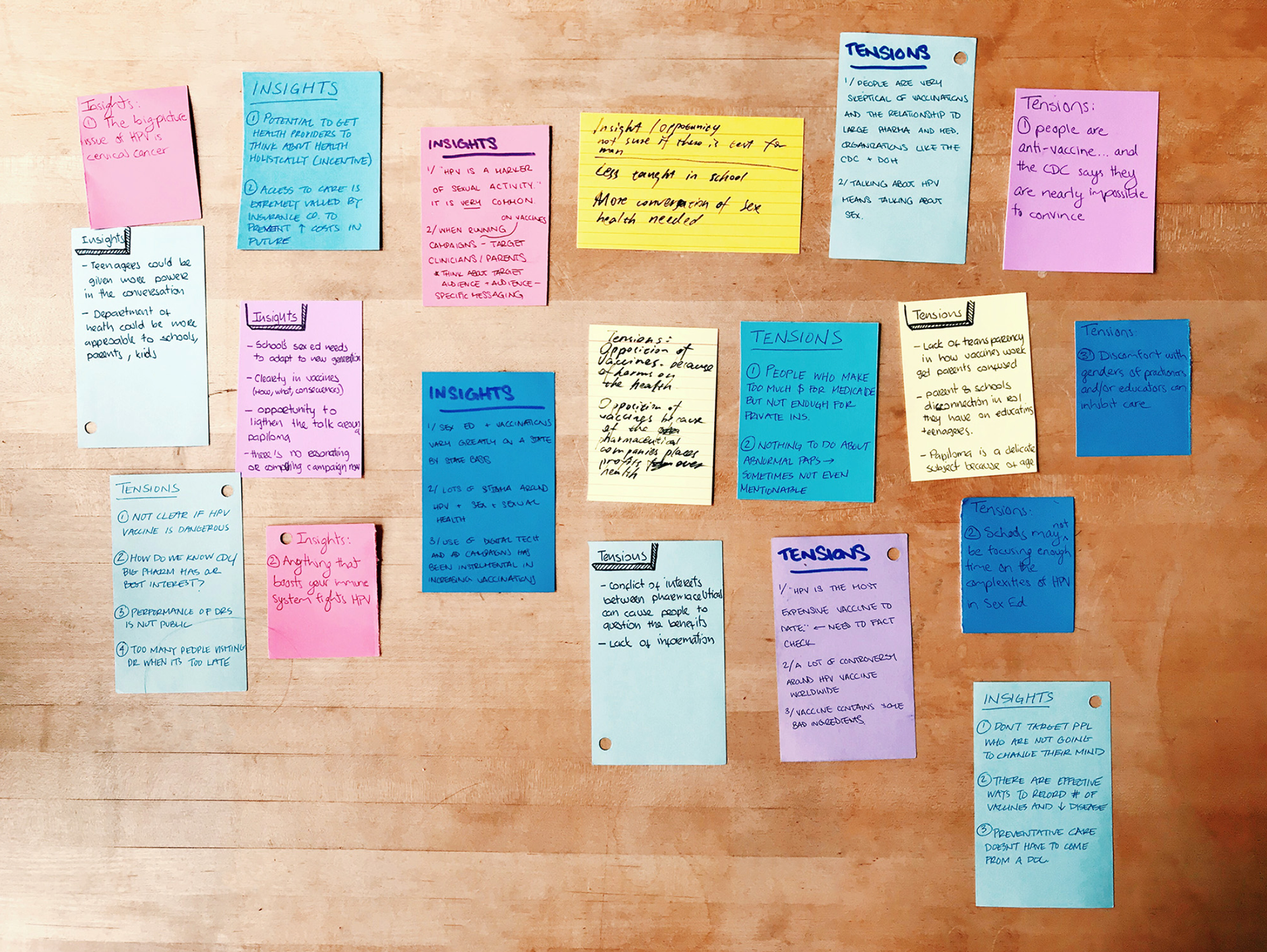
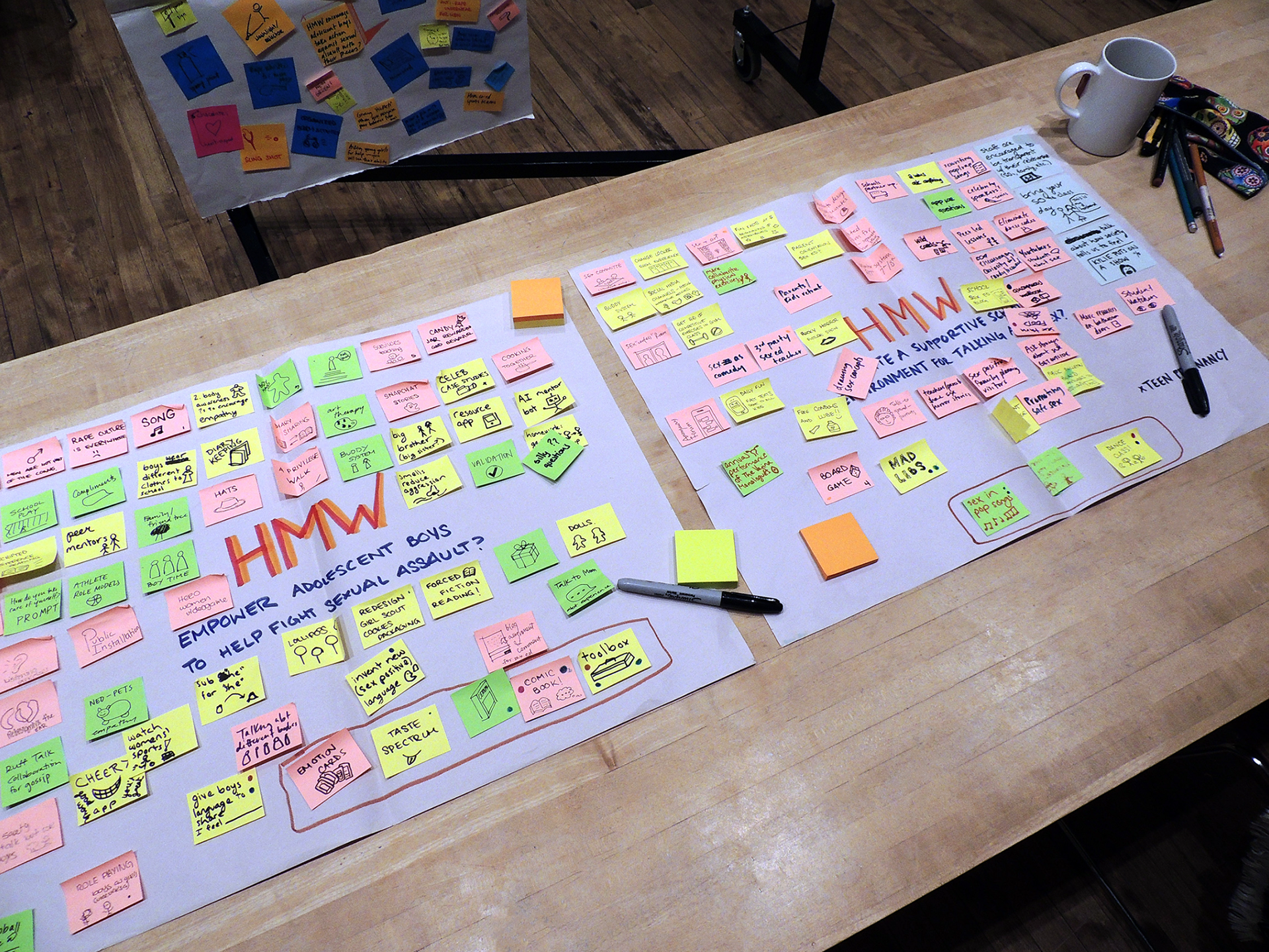
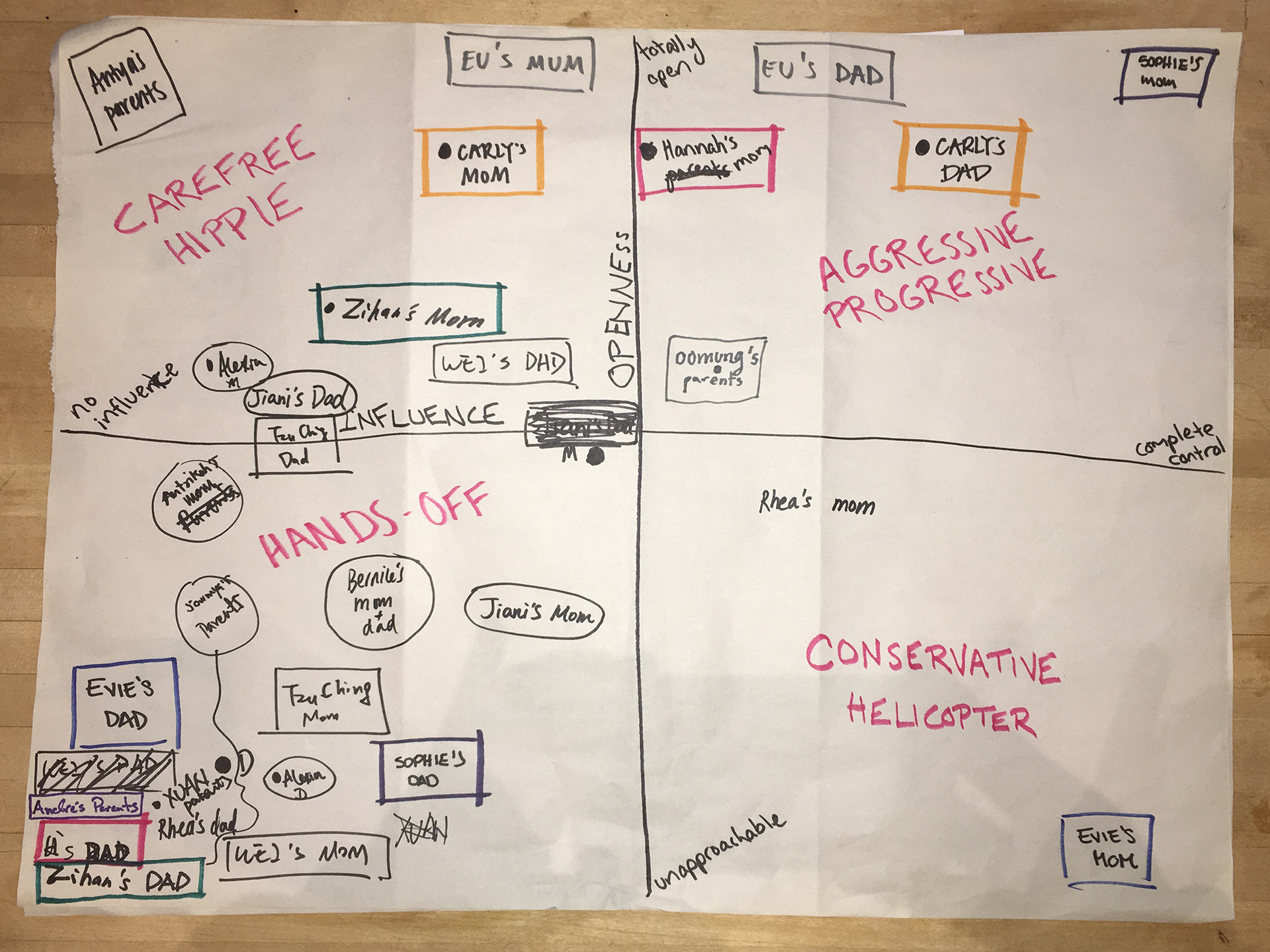
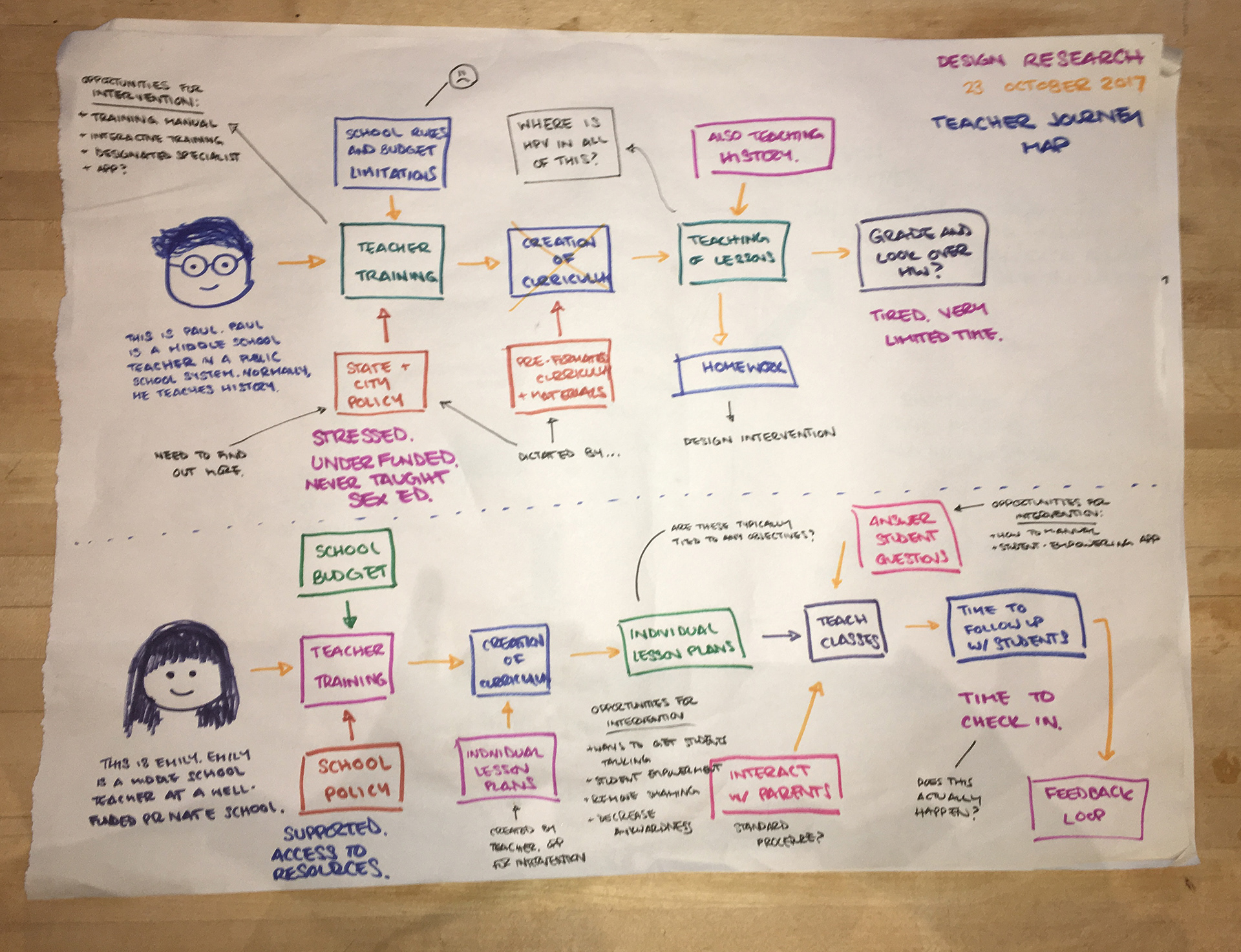
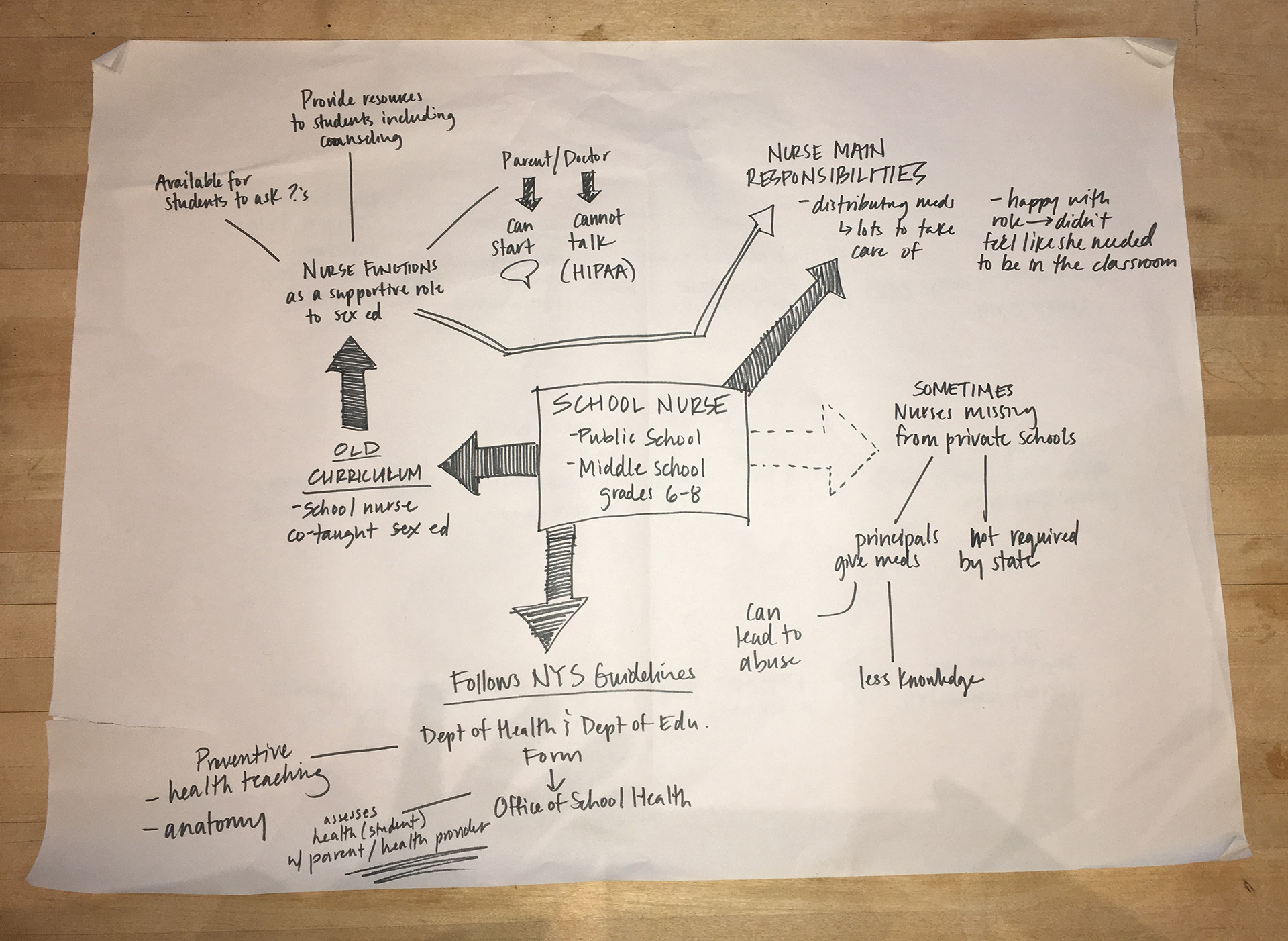
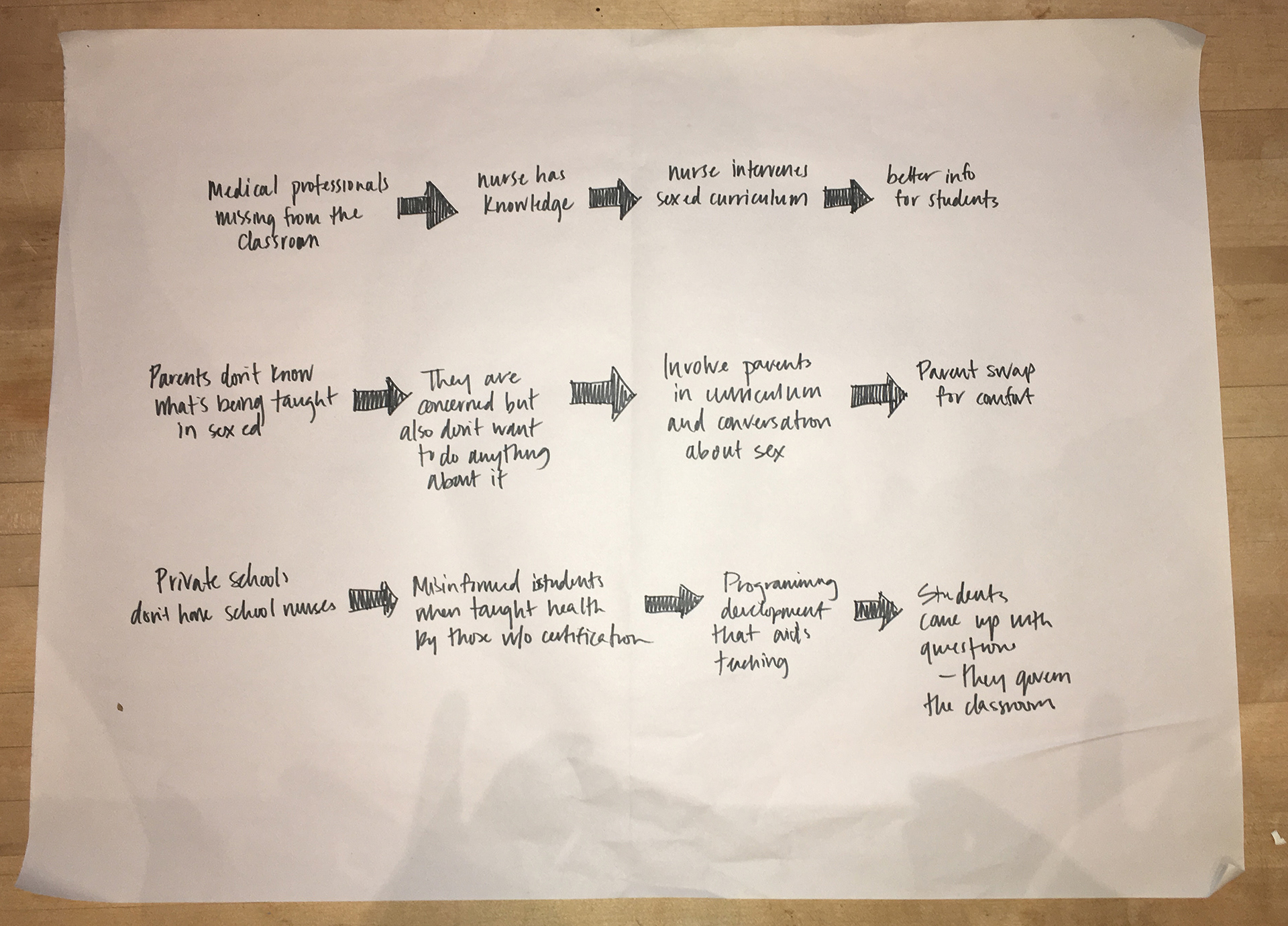
Throughout the process, we prototyped concepts for feedback from the instructor, our class, and subject-matter experts. This included some the the early prototypes below, which are design interventions to counter rape culture.
One of my prototypes was the LikeLike app, shown on the right side of the array below. Check it out on this page of my portfolio site.
Credits
Shout out to the team: Sophie Carrillo, Zihan Chen, Evie Cheung, and Carly Simmons. Sophie created the beautiful graphic design for the booklet. Evie and Carly created many of the slides and diagrams used throughout this page.